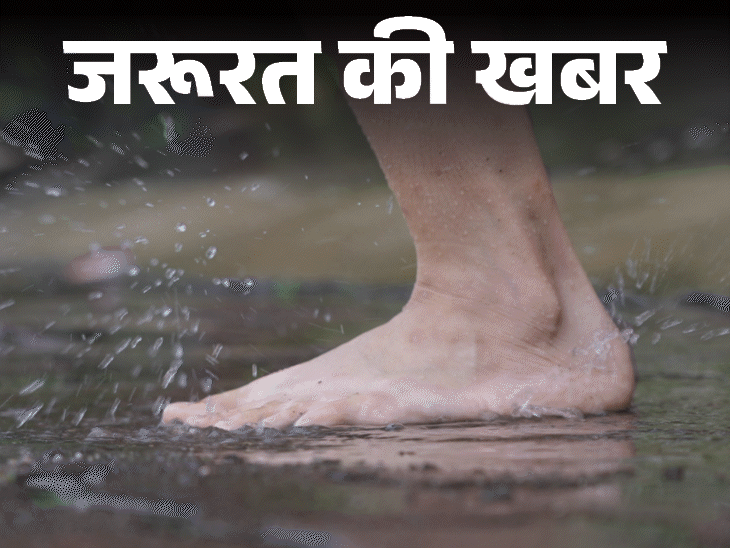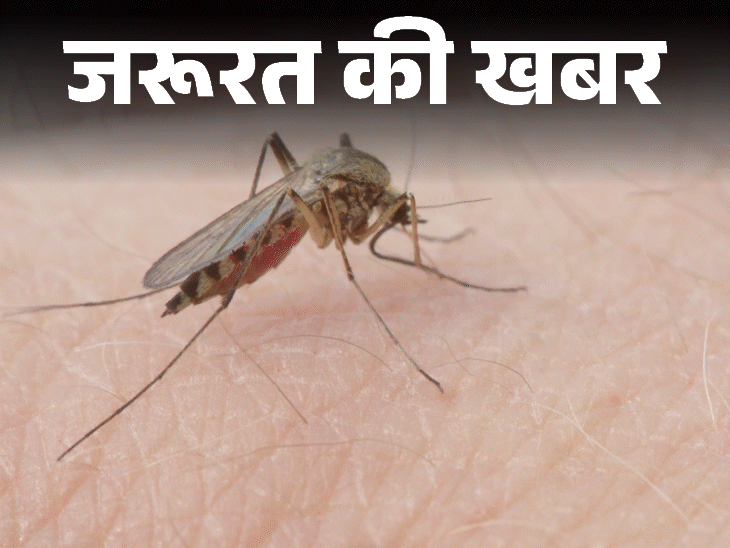58 minutes agoAuthor: Shivakant Shukla
- Copy link

Rain The weather gives relief from the heat. But it also brings many health problems like viral infection and flu with it. During this time, the effect of increased moisture in the air is visible not only inside the body, but also on the skin, hair and feet.
Actually, it is common to wear soaked shoes and socks during rainy days, passing through mud and dirty water. This increases the risk of fungal or bacterial infection in the feet. Therefore, it is very important to take proper care of the feet in this season.
So let’s today News of the need I will talk in detail about the care of the feet during the rainy season. Will also know that-
- Why does the risk of infection in the feet increase in monsoon?
- Which people need to be more vigilant?
Expert: Dr. Rishi Parashar, Dermatologist, Sir Gangaram Hospital, New Delhi
Question- Why does the risk of infection in the feet increase during the rainy season?
answer- During the rainy season, there is an atmosphere of moisture and dirt all around. People often wear wet shoes or socks or walk in mud and dirty water, causing legs to remain wet for a long time. This condition can sometimes cause fungal and bacterial infections.
Apart from this, due to moisture, the skin of the foot starts to cut down quickly. In such a situation, if cleanliness is not taken care of, then bacteria and fungus start growing rapidly, which increases the risk of infection manifold.
Question- What are the symptoms of fungal or bacterial infection in the feet in the rain?
answer- Initially its symptoms may look light. But if not paying attention to time, they can take the form of serious problem. Therefore, if the symptoms mentioned in the graphic below, do not ignore them.

Question- What are the problems related to the feet during the rainy season?
answer- During this time the legs face the most moisture, dirt and mud, which increases the possibility of athletes foot (fungal infection on the skin of the feet) and fungal nail infections.
If there is a cut, wound or blister in the legs, then bacteria can easily enter it with dirt and contaminated water. This increases the risk of bacterial infection.
Wearing wet shoes and socks in the rain makes the skin soft and weak, which can cause skin infection. Walking in waterlogging and mud can cause allergies, itching and rash on the skin. Apart from this, many types of skin and nail problems start.
Question- What is important to take care of the feet in the monsoon?
answer- In this season, it is very important to protect the feet from infection and dirt. Take special care of some things for this. Understand it from the graphic below-

Question- Who needs to be more cautious to avoid the infection of the feet in the rain?
answer- In this season, there can be infection in anyone’s feet. But for some people this risk is high. In such a situation, they need to take special care. Such as-
- Diabetic people do not heal skin injury or wounds quickly. This leads to a high risk of spreading infection.
- In old age, the skin becomes thin and sensitive, which increases the risk of moisture and wound.
- Whose immune system is weak. They can come in the grip of fungal or bacterial infections quickly.
- People working outside the delivery boy, security guards and traffic police, who wear shoes and socks for a long time. They also have more risk.
- People suffering from skin problems are also more at risk of infection.
- Those who have more sweat, moisture in their feet persistent. This causes bacteria to thrive quickly.

Question- Can any home remedies be helpful to cure the infection of the feet in the monsoon?
answer- Some home remedies may provide relief in light fungal or bacterial infections of the feet. Such as-
- Wash the feet 1-2 times a day by mixing a little antiseptic (such as detol or betadine) in lukewarm water. This can cause bacteria and fungus die.
- Tea tree oil has antifungal properties. Mix 2-3 drops of tea tree oil in coconut oil and apply it on the affected area twice a day.
- Make a paste by mixing baking soda and water and apply it on the affected area. This moisture helps in absorbing and reducing itching.
- Neem has antibacterial and antifungal properties. Boiling neem leaves and washing feet with that water can be helpful in reducing infection.
- Allow the infected part as much as possible as moisture can increase fungal growth.
- Apart from this, use antifungal cream or powder with doctor’s advice.
If the infection increases, the choice comes out or pain and burning is unbearable, then it is necessary to seek the advice from the doctor. Keep in mind that home remedies are only for early relief, not cure.
,
Also read this news of the need
News of the need: Increasing dengue cases in monsoon: Do not ignore these 10 symptoms, dengue, 9 important precautions for rescue

The risk of dengue increases during the rainy season. During this time, the water stored at various places create a favorable environment for the flourish of mosquitoes called Aedes AEGYPTI. Dengue is spread by the bites of these mosquitoes, which is a dangerous viral infection. Read full news …



